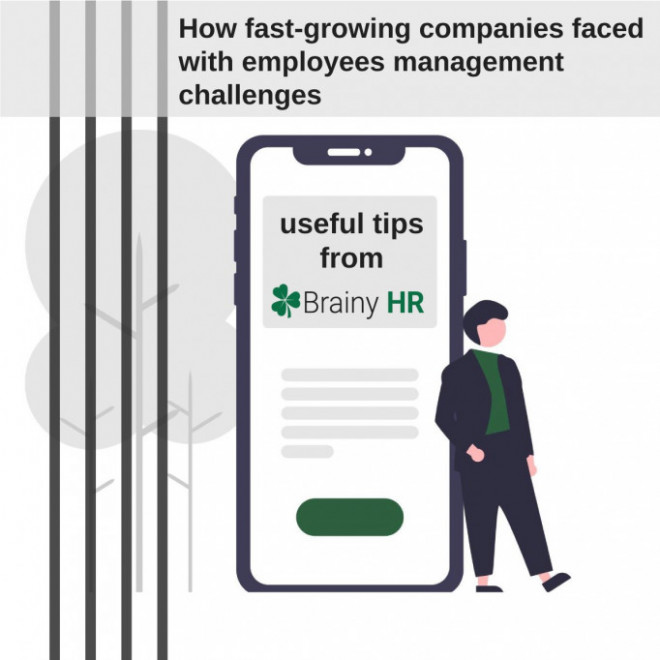In a changing and rapidly developing business environment, the most successful are organizations that implement new processes and effective methods of assessing, developing and maintaining human capital. Proper management of human resources is a key dimension of a business strategy that supports the company's innovation and development.
People are the most valuable resources of companies. They ensure the competitive advantage of each organization. HRM systems provides clients with effective tools and solutions supporting long-term goals related to human capital in the organization.
Brainy HR can help companies verify and improve overall employee engagement, find systems and analytics that support the effectiveness of personnel investments and business management. Our qualified consultants help identify the challenges, which your organization faces in terms of employee recognition program, HR analytics, and provide solutions that align with your overall business strategy.
The process of transition from a small business to a professional enterprise
The question is: how do you move from a small company, a business based on the founder's idea and perhaps the work of himself and a few close people, to an efficient, professionally managed enterprise? This process has four steps.
Assessment of the current state
The first stage is the assessment of the current state. We check all the key elements, what works and what does not, what does it look like today, do we already have any job positions, do we have any descriptions of these positions, to what extent they correspond to reality, do we have any plans, do we have a budget, do we have any communication systems, does everyone in the company know how it all connects? So in the first step, we check how it works today.
Create a business development plan
The second stage is creating a company's development plan. They can be divided into three groups. The first group is the organizational chart, i.e. we answer the questions; who reports to whom in the company, who does what and who is responsible for what. The second group within the company's development plans are strategic plans: what we do, what our company does and does not do, where we are going, what we want to achieve and how we want to do it. The third group is the preparation of managers who are to take on the burden of running this company, on the one hand training current managers so that they will be better and better at their work, and on the other hand searching for successors of people who will be able to take managerial positions in our company.
Implementation of the plan
The third step is to put this plan into practice - it is very important - the best plan will do us no good if it remains on paper.
Monitoring progress and corrections
The fourth and final stage is monitoring of progress and possible corrections. It does not happen that such a plan is 100% correct. You will probably need to correct something in it, so be aware of that. Start to use the HRM system, it helps to become your management more clearly for newcomers and employees. We show you how it will work:
-
Implement Onboarding process
It's one of the most important processes, you can prepare a checklist and then use it. Also, you can download our example.
-
Recognition and Rewards process
Gives you the ability to implement unique programs that drive employee engagement. Points can be awarded for a wide range of actions and employee activities.
-
Performance review
Performance review automates the process of evaluating employee performance, setting new goals and drawing up individual development plans. The lack of clear feedback strongly demotivates the team.
-
Time off management
Not sure where your employee is? With BrainyHR you can track weekends, sick days and holidays. The system will notify you about upcoming holidays and leaves of absence. Employees can easily request time off that managers can approve or reject. Time adjustment logic and flexible rules allow you to create perfect time off structure.
What about the founder of the company?
The question is: what about the company's founder then? Because if I founded this company and my main asset was the idea, my energy that drove the company at the beginning, what will happen to me when this company will operate in a completely different way, when it will be necessary to prepare these plans, budgets, procedures and so on, which may not turn me on at all. There are several possibilities.
The first is that I can not change anything, I can pretend that there are no problems and struggle with these problems - it is probably not the best way, but there are people who work this way for years, a lot depends on what they are on the market, what their competition is, what are their situation. You can go on such a business, but you have to be aware that the problems I have mentioned will keep growing and coming back.
The second path for a company founder is that he can learn to be a manager, he can learn planning, budgeting, controlling and all other things, but that doesn't always work. It is difficult, but it can be done. If, as a business owner, you have the ambition to develop it and lead a large organization, this can be learned.
The other option is that you can give up the management of the company, back out and find managers to do it for you.
You can also stay at the head of the company, you can become a visionary president, but knowing that you do not in fact manage people, you do not manage a team, you hire a manager, managing director, operational director - someone who will deal with the entire operational sphere instead of you in the company, and you will focus on the vision, setting new directions.
The last solution is that you can just sell your business and retire or start a new business, which is also quite common. Entrepreneurs who are great at this first stage of the company's operation, when this energy is needed, sometimes do so that they start the company, sell it and start a new one.


 Posted on Jul 21, 2020 by Anna
Posted on Jul 21, 2020 by Anna


